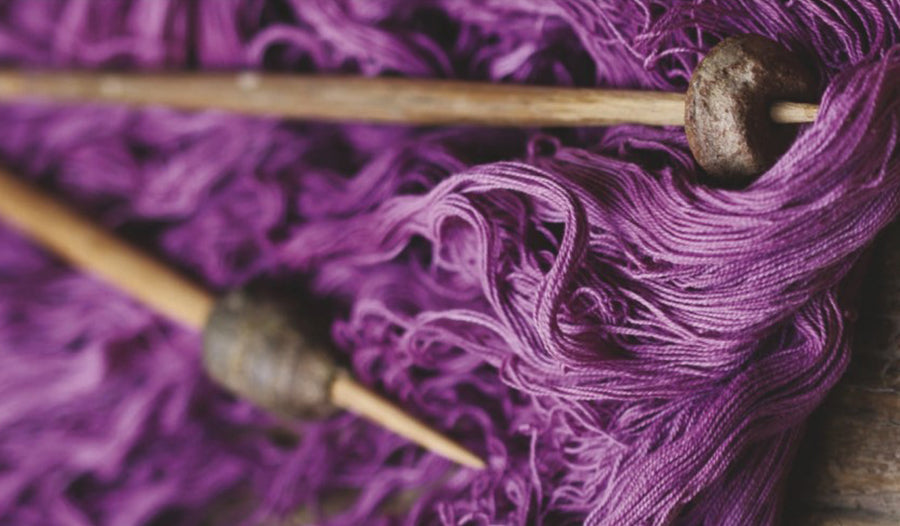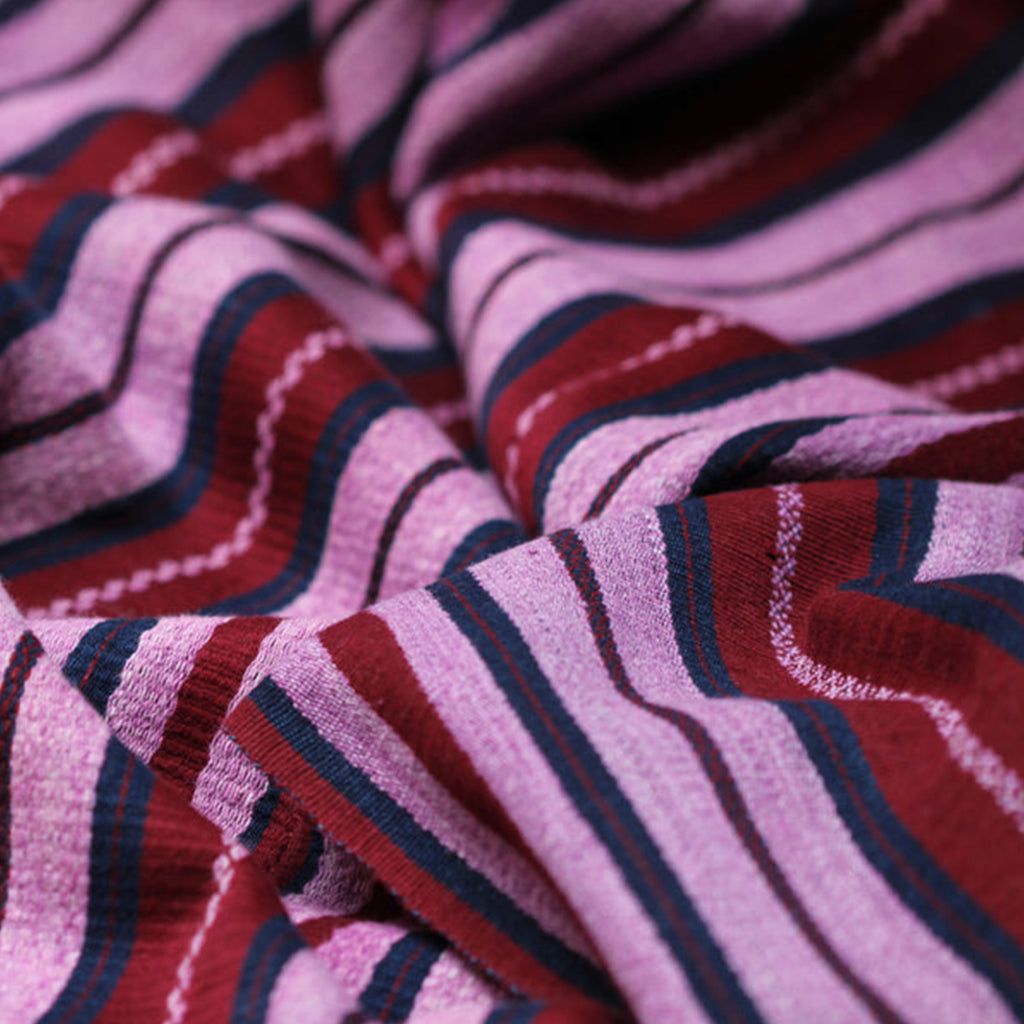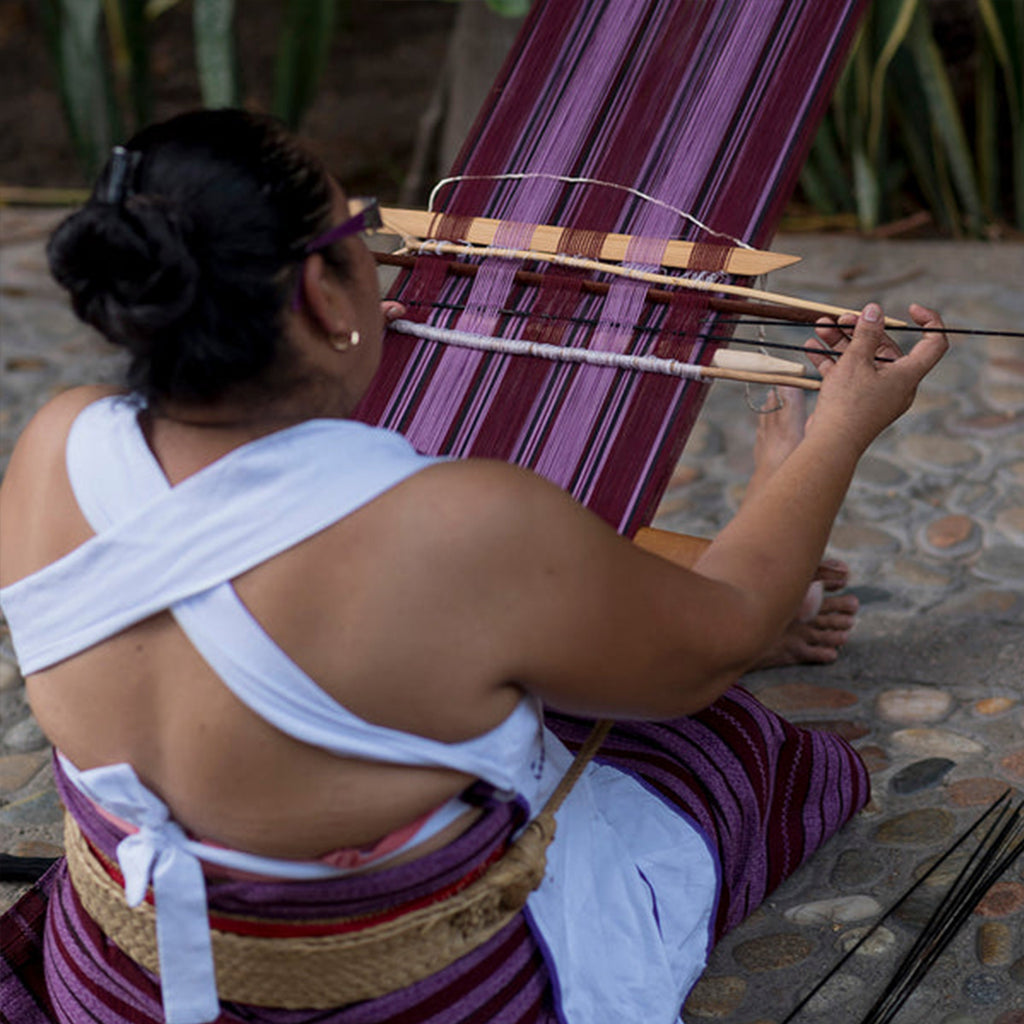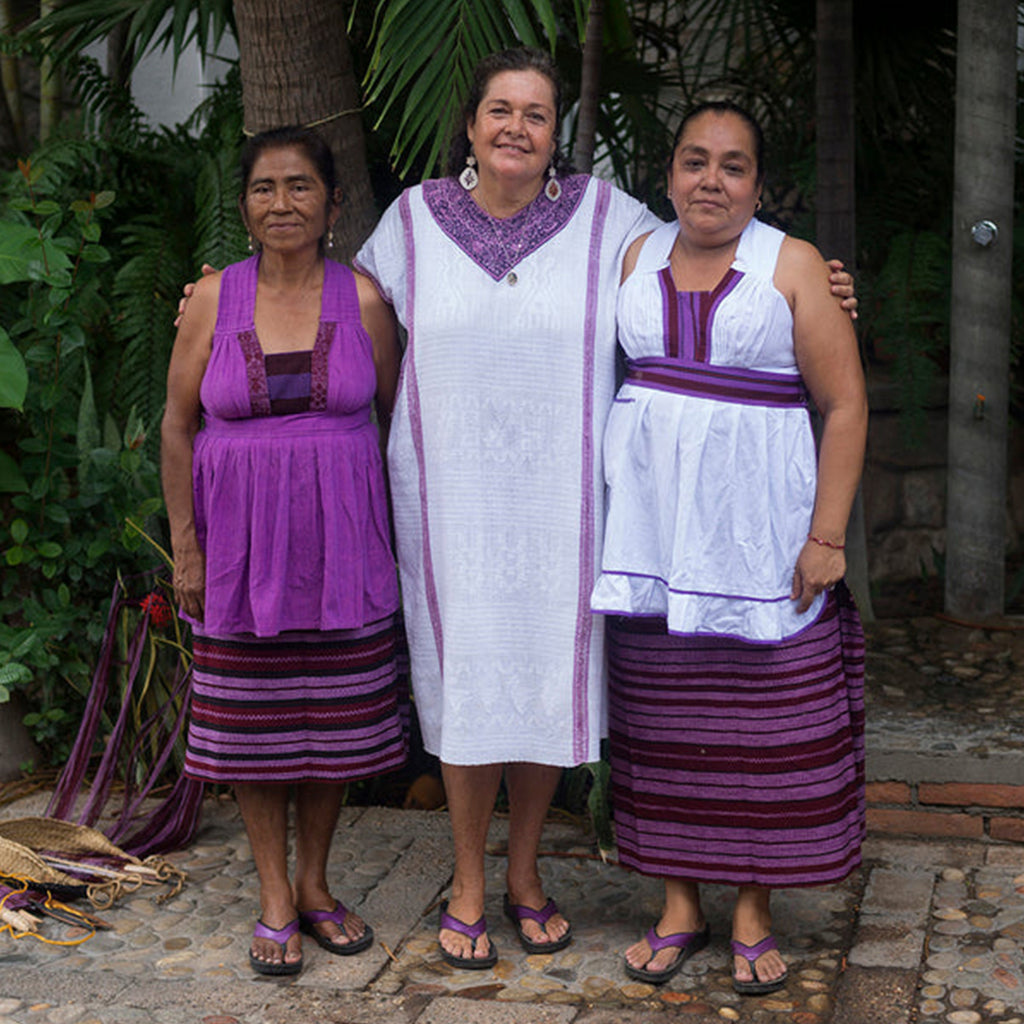
MY LIFE IN COLOUR: THE COLOUR PURPLE

How many tixinda sea snails does it take to dye a single skein of cotton?
You may also be surprised that 'milking' the snail for the treasured purple dyestuff they produce does not harm the mollusc, and they are gently returned back to the sea. Keith Recker, who will be taking part in our My Life in Colour talk in March, explores more about the last sea snail purple...

At low tide, a few shirtless Mixtec men walk along the humid Pacific coast of Oaxaca looking for sea snails. Dodging the waves, navigating wet rocks with bare feet, they look for sea snails known as tixinda to the Mixtec. After prying one off the rocks by hand or with a mango-wood stick, they press just the right part of the snail’s ‘foot’ to encourage it to secrete a milky liquid. Left to their own devices, the snails deploy this liquid as a neurotoxin that paralyses the smaller shellfish they consume. To these seekers of tixinda, however, the secretion is a treasured and ancient dyestuff, and they apply it directly onto a skein of cotton yarn looped around a forearm.
Once ‘milked’, the snail is gently returned, unharmed, to its habitat to live another day. The cove where it lives will be visited only once per lunar cycle by the dyers, to give the snails time to recover. Dyeing occurs only from October to May so as not to interfere with the snails’ breeding season. At first, the tixinda liquid stains the yarn a bruisy greenish colour, but as the liquid oxidises, it turns first blue, and then a brilliant, colourfast reddish purple. ‘This is one of the most ancient dyeing methods still in practice today,’ comments author, photographer and tour organiser Eric Mindling. ‘Mixtecs have lived on and near this coast for at least 1500 years, and they revere this practice as integral to their heritage as a people. For about three hours a day, as long as the water level is low enough, a dyer might encounter about 400 snails - enough to dye a single 250-gram skein. That’s 400 snails, lifted, milked, and settled carefully back onto the rocks one at a time over a few hours’.

The leader of these Mixtec dyers, Habacuc Avendaño, has made purple yarns this way for over 60 years. One skein per low tide, however, would have been a meager yield back in the 1950s and 60s, when he learned his craft. ‘When I was little, there were many more snails back then, and larger ones,’ he says. ‘We would dye one costal of yarn [about 40 skeins] during two weeks at the coast. Sometimes we would double- and triple-dye them to get very dark shades of purple’. Across the entire 2017 harvest season, his group was able to colour a mere 15 skeins of single-dyed purple yarn.
Patrice Perillie, founder of non-profit group Mexican Dreamweavers which supports the Mixtec dyers and weavers of Habacuc’s community of Pinotepa de Don Luis, says with dismay, ‘We’re heading rapidly towards the disappearance of this art. Snails large enough to produce dyestuff are fewer and fewer. The problem is the pressure put on the snail population by more and more people living here and visiting here. Local fishermen gather the snails, as well as little lapas (a type of limpet), their favorite prey, and cut them up for ceviche’.

The few skeins Habacuc’s group can currently dye go directly to the women of a 60-member weaving cooperative in Pinotepa de Don Luis. Habacuc’s wife, Margarida (known as Teresita), is one of them. As an expert backstrap loom weaver, Teresita takes about three months to weave her community’s traditional long wrap skirt, the posahaunco, which features bands of tixinda purple, cochineal red, and indigo blue. Ancient motifs, rich with meaning to their Mixtec creators, bring certain of these bands vividly alive. In Pinotepa there is still immense prestige associated with making and wearing posahuancos.
‘These clothes represent the way things were always done, up to just a decade or two ago,’ says Eric. ‘Since less than 40 of these amazing garments can be made a year now - and maybe less than that there is rarity and value to each and every one of them’.

To Habacuc and Teresita, this sense of value goes beyond colour and textile, and deep into Mixtec culture. The snail and the purple colour it helps them make are considered sacred. colour is associated with womanhood, the lunar cycle of human fertility, and blood. ‘The snails themselves are matriarchal in a way,’ comments Patrice. ‘The females are larger and produce more dye. They need a lunar cycle to recharge’.
The community’s way of life was shaped around the making of purple, and the journey to the coast to dye yarns was a major event. A group of dyers would walk eight days to the coast. ‘It was a real journey,’ says Eric, ‘involving several river crossings. The men would carry their own food, and when their tortillas, beans and coffee ran out, they would work in local farms to be reprovisioned. Once they reached their campsite on the coast, they’d stay for about three months before heading back to Pinotepa’. Habacuc made his first journey in 1956, alongside an uncle.

Dirt roads of the 70s and paved roads of the 80s have reduced the journey to a short drive, and the stay along the coast to a few days. The decline of the snail population, and the dwindling yield of purple yarns, give the abbreviation of the process an unfortunate logic. ‘We’re trying to educate local fishermen working the coves where the sea snail lives,’ says Patrice. ‘It’s important that they not harvest them. But we may have only five years or so left for this very important art to survive’...
Extract from Keith Recker's book, True Colours: World Masters of Natural Dyes and Pigments, published by Thrum Books in September 2019. This excerpt appeared in Issue 89 Latin.

We're delighted that trend and colour forecaster Keith Recker will be taking part in our upcoming online talk, My Life in Colour, on Wednesday 16 March.
He will be discussing the prehistoric reds of fertility and passion, the royal purples of the Classical era, virtuous blues of the Middle Ages, the powerful blacks of the Renaissance and Reformation eras, discriminatory yellows, protest pinks, Green Party greens, and much more.
Book your ticket here:

